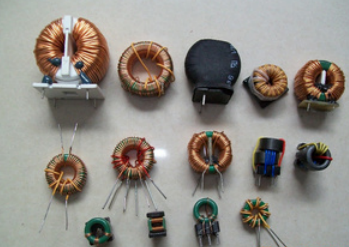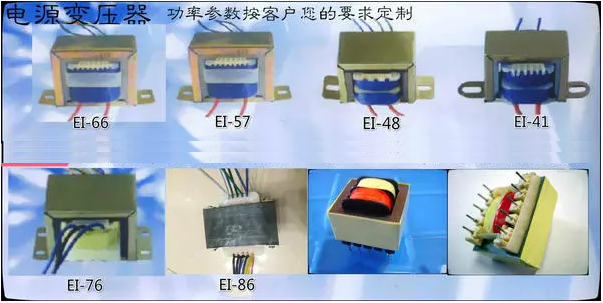NEWS
How Encapsulated Transformers Meet Modern Environmental Standards
Release time:
Jan 29,2025
How Encapsulated Transformers Meet Modern Environmental Standards
Table of Contents
- What Are Encapsulated Transformers?
- The Evolution of Transformer Designs
- The Importance of Environmental Standards in the Electrical Industry
- Benefits of Encapsulated Transformers
- Sustainability Features of Encapsulated Transformers
- Applications in Various Industries
- The Future of Encapsulated Transformers
- Frequently Asked Questions
What Are Encapsulated Transformers?
Encapsulated transformers are electrical devices designed to transfer electrical energy between two or more circuits through electromagnetic induction. Their unique feature is that they are enclosed in an environmentally friendly resin, which protects them from moisture, dust, and other environmental contaminants. This encapsulation not only enhances the transformer's durability but also significantly reduces the risk of electrical hazards, making them ideal for modern applications.
The Evolution of Transformer Designs
Transformers have undergone significant changes since their inception. Traditional transformers, often exposed to the elements, were prone to failure due to environmental conditions. However, with the advent of encapsulated transformers, we see a shift towards enhanced protection and performance. These devices incorporate advanced materials and technologies that allow them to operate efficiently and sustainably in various environments.
From Oil-Filled to Dry-Type Transformers
The transition from oil-filled transformers to dry-type encapsulated transformers marks a crucial evolution in transformer technology. Oil-filled transformers, while effective, pose environmental risks due to potential leaks and spills. In contrast, encapsulated transformers eliminate these concerns by using solid insulation materials, making them a more environmentally sound choice.
The Importance of Environmental Standards in the Electrical Industry
As industries globally become more aware of their environmental impact, adhering to environmental standards has become paramount. In the electrical sector, these standards ensure that products are not only efficient but also safe for the environment. Encapsulated transformers have emerged as a response to these standards, showcasing their commitment to sustainability and environmental responsibility.
Regulatory Compliance
Manufacturers of encapsulated transformers must comply with various local and international environmental regulations. These regulations, such as the ISO 14001 standard, dictate the sustainable practices in product design and manufacturing processes. By meeting these standards, encapsulated transformers demonstrate their efficacy in promoting eco-friendly solutions.
Benefits of Encapsulated Transformers
Encapsulated transformers offer numerous advantages over traditional transformer designs, particularly concerning sustainability and performance. Some of the key benefits include:
Enhanced Safety and Reliability
The encapsulated design provides superior insulation and protection against environmental factors. This ensures that encapsulated transformers operate efficiently, minimizing the risk of failures that could lead to safety hazards.
Reduced Environmental Impact
By eliminating the use of oil and minimizing maintenance requirements, encapsulated transformers significantly reduce their environmental footprint. This commitment to sustainability aligns with the growing demand for eco-friendly electrical solutions.
Improved Efficiency and Performance
Encapsulated transformers are designed to operate at high efficiency levels, ensuring optimal performance. This efficiency translates into lower energy consumption, ultimately benefiting both users and the environment.
Sustainability Features of Encapsulated Transformers
The design and construction of encapsulated transformers emphasize sustainability. Here are some of the prominent sustainability features:
Use of Eco-Friendly Materials
Manufacturers prioritize the use of environmentally friendly materials in the production of encapsulated transformers. This choice not only enhances the product's durability but also contributes to reducing waste and pollution.
Energy Efficiency
Innovative design techniques and advanced materials used in encapsulated transformers improve energy efficiency. This efficiency promotes lower operational costs and reduces energy consumption, aligning with modern energy conservation goals.
Longer Lifespan
Thanks to their robust construction and protective encapsulation, these transformers have a longer operational lifespan compared to traditional models. A longer lifespan means reduced frequency of replacements, contributing to less waste in the long run.
Applications in Various Industries
Encapsulated transformers find applications in diverse sectors due to their reliability and environmental benefits. Key industries include:
Renewable Energy
In the renewable energy sector, encapsulated transformers play a crucial role in wind and solar power systems. Their ability to withstand harsh environmental conditions makes them ideal for outdoor installations.
Telecommunications
Telecommunication facilities require efficient and reliable power sources. Encapsulated transformers deliver the necessary electrical energy while conforming to environmental regulations, ensuring minimal ecological disruption.
Industrial Applications
In manufacturing and industrial environments, encapsulated transformers provide essential power management solutions. Their robust design allows them to perform under challenging conditions while promoting safety and sustainability.
The Future of Encapsulated Transformers
The future of encapsulated transformers is promising as the demand for sustainable and efficient electrical solutions continues to grow. Innovations in materials and technology will further enhance their performance, making them indispensable in the evolving electrical landscape.
Smart Technology Integration
The integration of smart technology into encapsulated transformers will revolutionize their operation. Features like real-time monitoring and predictive maintenance will enhance efficiency and reliability, ensuring they meet future demands.
Increased Adoption in Green Initiatives
As industries prioritize sustainability, the adoption of encapsulated transformers will likely increase. Their inherent advantages align with the goal of reducing environmental impact, making them a preferred choice for greener electrical solutions.
Frequently Asked Questions
1. What is the main advantage of encapsulated transformers compared to traditional transformers?
The main advantage is their superior protection against environmental factors, which enhances safety, reliability, and longevity while reducing environmental impact.
2. How do encapsulated transformers comply with environmental standards?
Encapsulated transformers are designed using eco-friendly materials and manufacturing processes that meet various local and international environmental regulations.
3. Can encapsulated transformers be used in outdoor applications?
Yes, due to their robust and weather-resistant design, encapsulated transformers are ideal for outdoor installations in harsh environments.
4. What industries benefit the most from encapsulated transformers?
Industries such as renewable energy, telecommunications, and manufacturing benefit significantly from encapsulated transformers due to their reliability and sustainability features.
5. What is the expected lifespan of encapsulated transformers?
Encapsulated transformers typically have a longer lifespan than traditional transformers, often exceeding 20-30 years with proper maintenance.
Conclusion
Encapsulated transformers represent a significant advancement in electrical technology, aligning perfectly with modern environmental standards. Their innovative design, coupled with their commitment to sustainability, makes them a vital component in various industries. As we move towards a greener future, the role of encapsulated transformers will only grow, offering efficient, reliable, and environmentally friendly solutions that meet the demands of today's world.


















